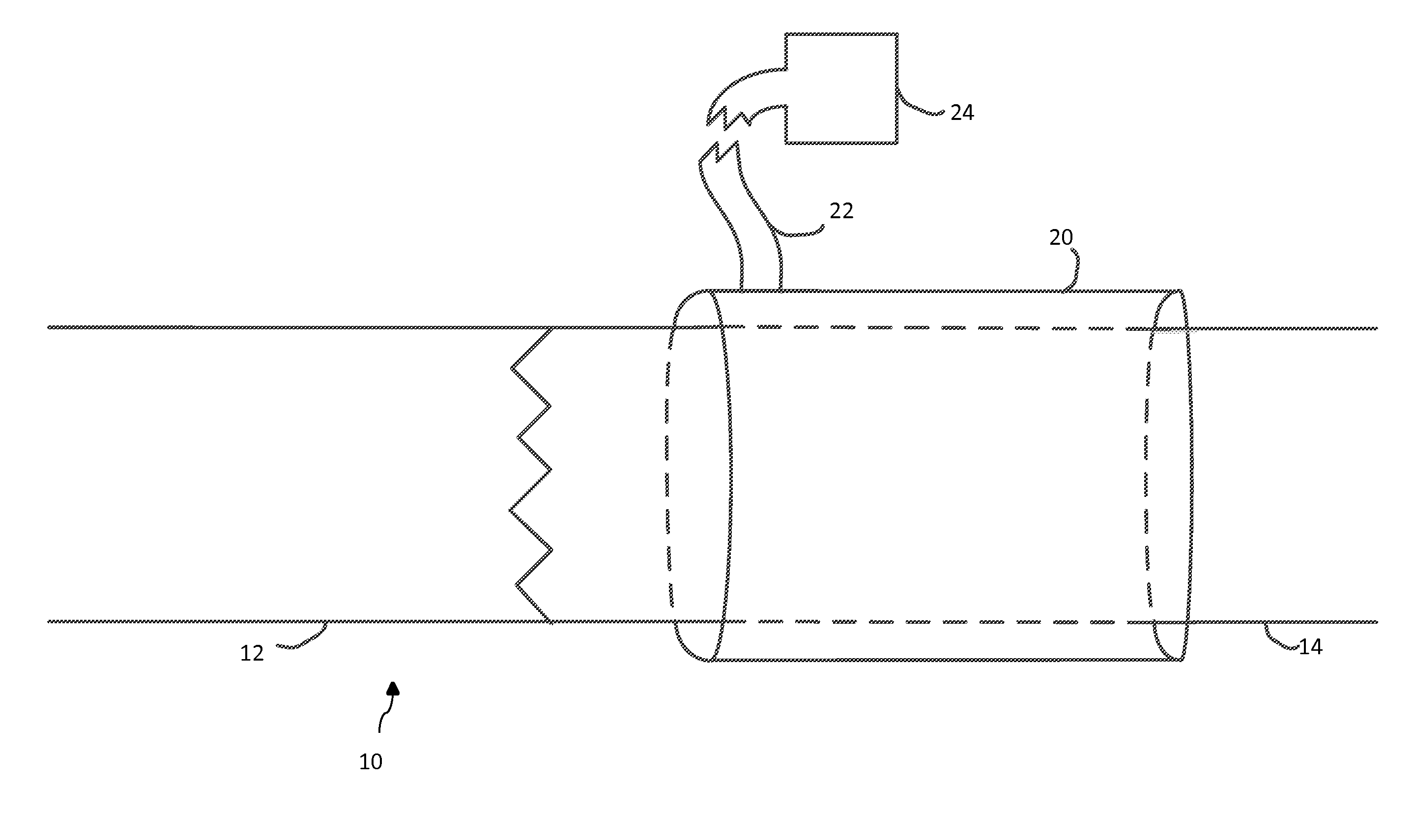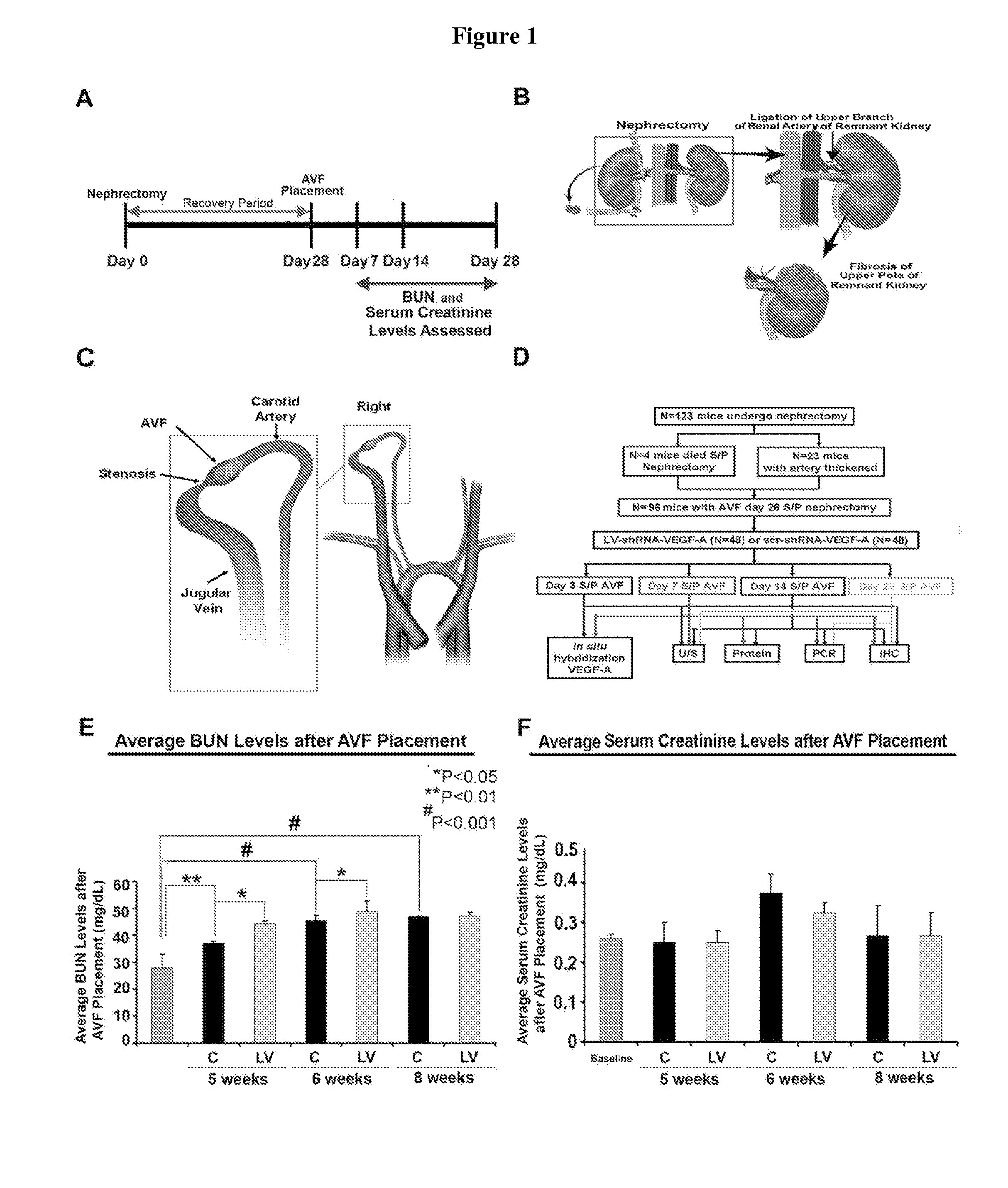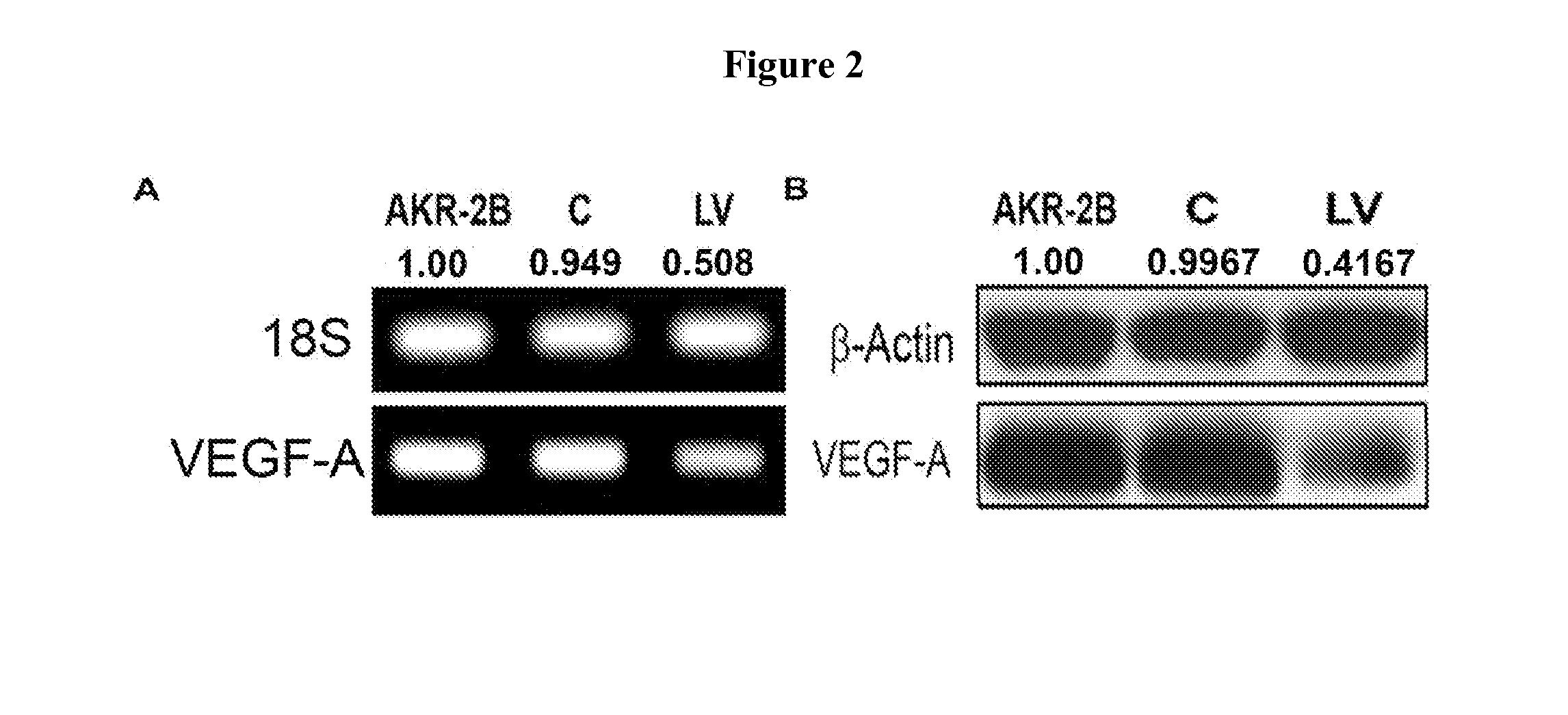Methods and materials for reducing venous stenosis formation of an arteriovenous fistula or graft
a technology of arteriovenous fistula and venous stenosis, which is applied in the direction of biocide, cardiovascular disorder, drug composition, etc., can solve the problems of frequent avf failure, reduce vegf-a expression, and reduce venous stenosis formation
- Summary
- Abstract
- Description
- Claims
- Application Information
AI Technical Summary
Benefits of technology
Problems solved by technology
Method used
Image
Examples
example 1
Inhibition of VEGF-A Reduces Venous Stenosis Formation in Arteriovenous Fistulas or Grafts
Experimental Animals
[0057]Appropriate Institutional Animal Care and Use Committee approval was obtained prior to performing any procedures. The housing and handling of the animals was performed in accordance with the Public Health Service Policy on Humane Care and Use of Laboratory Animals revised in 2000. Animals were housed at 22° C. temperature, 41% relative humidity, and 12- / 12-hour light / dark cycles. Animals were allowed access to water and food ad libitum. Anesthesia was achieved with intraperitoneal injection of a mixture of ketamine hydrochloride (0.20 mg / g) and xylazine (0.02 mg / g) and maintained with intraperitoneal pentobarbital (20-40 mg / kg). One hundred and twenty three, male C57BL / 6 mice (Jackson Laboratories, Bar Harbor, Me.) weighing 25-30 grams were used for the present study (FIGS. 1A-F). Chronic renal insufficiency was created by surgical removal of the right kidney accompani...
example 2
Simvastatin Reduces Venous Stenosis Formation in a Hemodialysis Vascular Access Model
Experimental Animals
[0107]Animals were housed at 22° C. temperature, 41% relative humidity, and 12- / 12-hour light / dark cycles. Animals were allowed access to water and food ad libitum. Anesthesia was achieved with intraperitoneal injection of a mixture of ketamine hydrochloride (0.20 mg / g) and xylazine (0.02 mg / g) and maintained with intraperitoneal pentobarbital (20-40 mg / kg). Sixty-eight male C57BL / 6 mice (Jackson Laboratories, Bar Harbor, Me.) weighing 25-30 grams were used for the present study (FIG. 18). Chronic kidney disease was created by surgical removal of the right kidney accompanied by ligation of the arterial blood supply to the upper pole of the left kidney as described elsewhere (Misra et al., J. Vasc. Interv. Radiol., 21:1255-1261 (2010); see, also, FIG. 18A). Three weeks after nephrectomy, the animals were started on simvastatin (40 mg / kg administered i.p. three times per week) or P...
PUM
| Property | Measurement | Unit |
|---|---|---|
| time | aaaaa | aaaaa |
| time | aaaaa | aaaaa |
| time | aaaaa | aaaaa |
Abstract
Description
Claims
Application Information
 Login to View More
Login to View More - R&D
- Intellectual Property
- Life Sciences
- Materials
- Tech Scout
- Unparalleled Data Quality
- Higher Quality Content
- 60% Fewer Hallucinations
Browse by: Latest US Patents, China's latest patents, Technical Efficacy Thesaurus, Application Domain, Technology Topic, Popular Technical Reports.
© 2025 PatSnap. All rights reserved.Legal|Privacy policy|Modern Slavery Act Transparency Statement|Sitemap|About US| Contact US: help@patsnap.com



